|
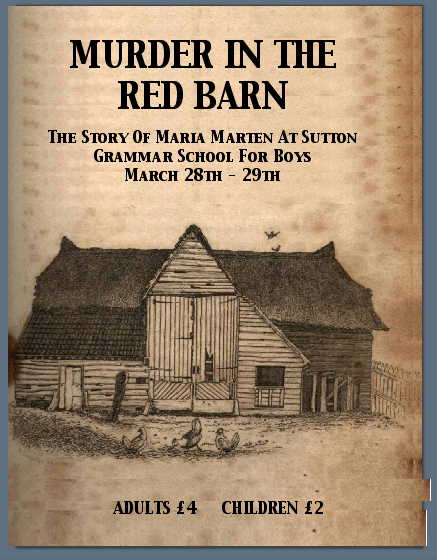
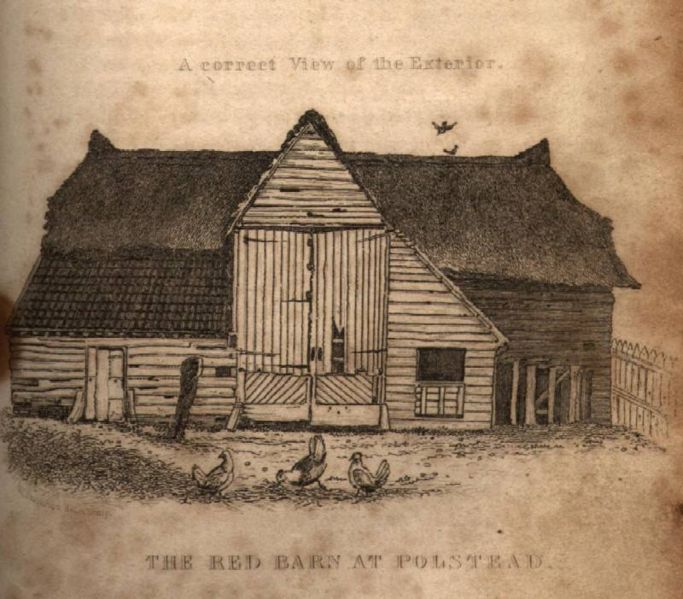
The
scene of the murder, the Red Barn, so called because of its half
red-tiled roof, which can
be seen
to the left of the main door in this sketch. The rest of the roof
was thatched.
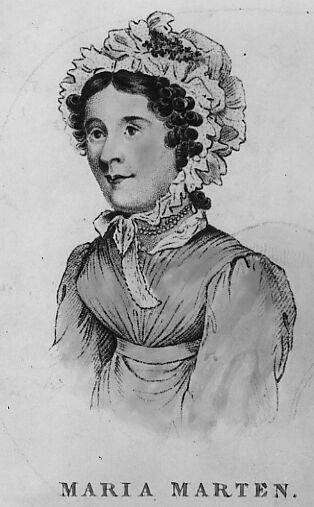
Maria Marten. Her sister Ann, who was said to be very similar to
Maria, was the model
for this sketch which appeared in Curtis' account of the case.

Maria's ghost points to her grave. Ann Marten's claim that she
dreamt about the location
of her grave added to the appeal of the case for the public and
press.
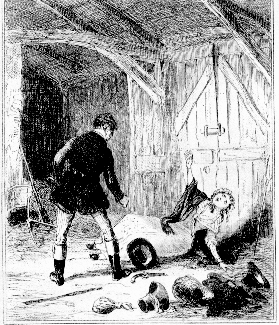

Corder shooting Maria Marten


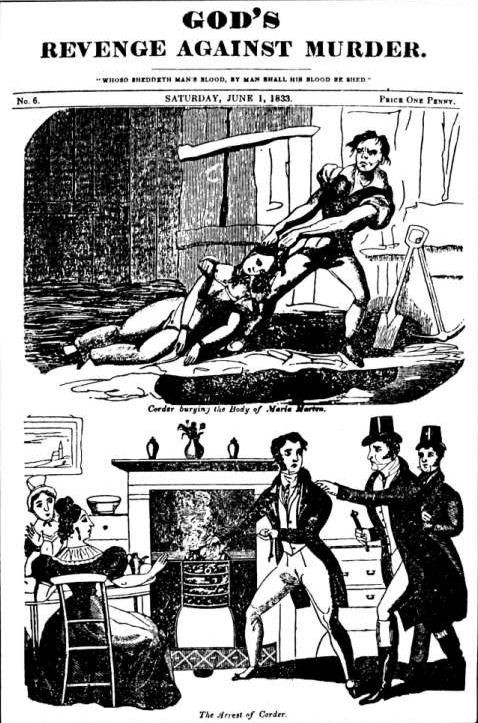
This
"penny dreadful" from 1833 shows Maria's burial and Ayres and Lea
arresting Corder.
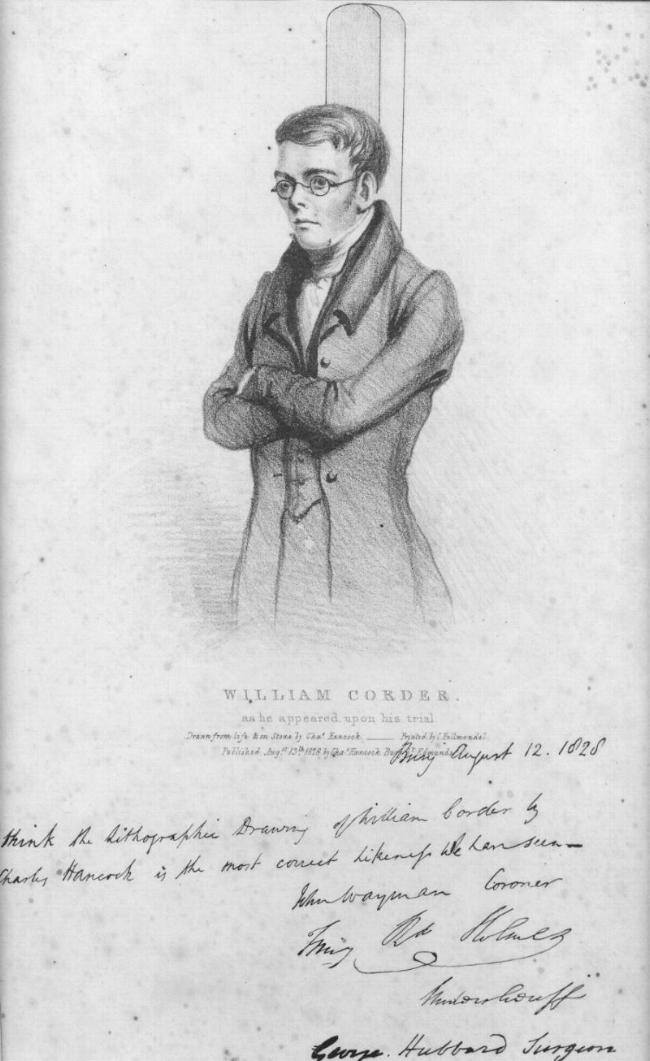
William Corder
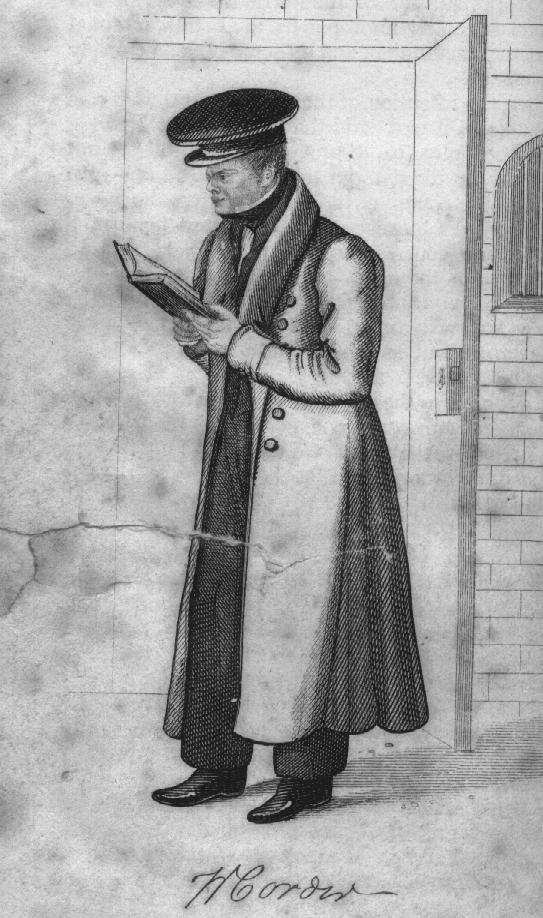
William Corder awaiting trial.
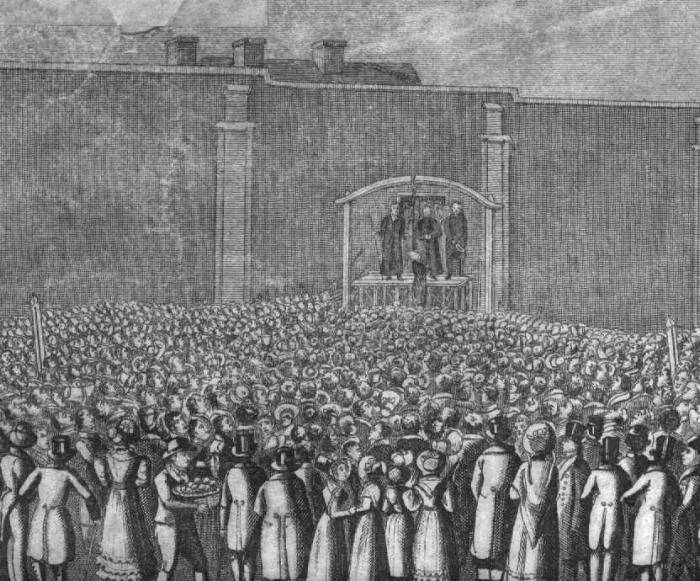
The
execution of William Corder.
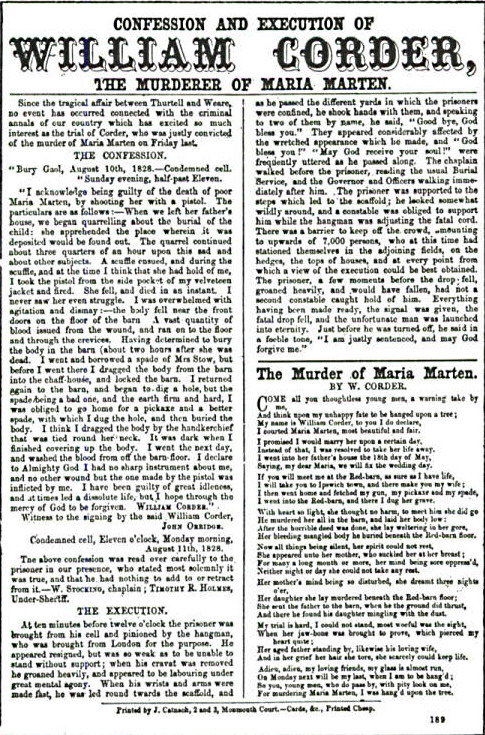
Catnach's broadside sold well over a million copies.
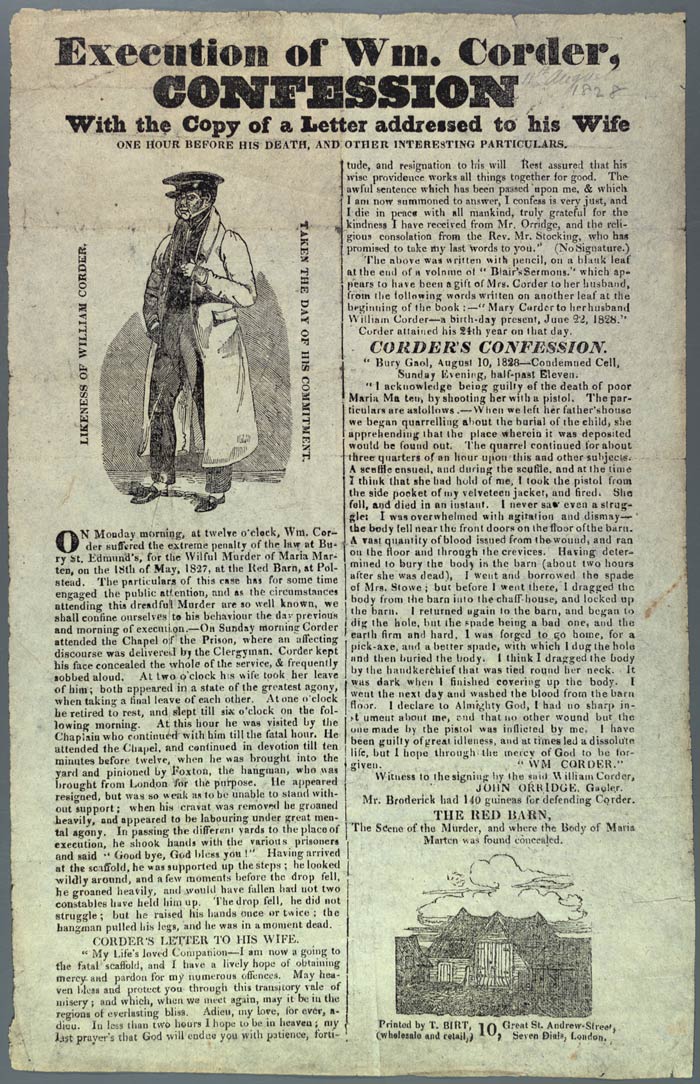
Another broadside, issued by T. Birt, include images and Corder's
last letter to his wife.
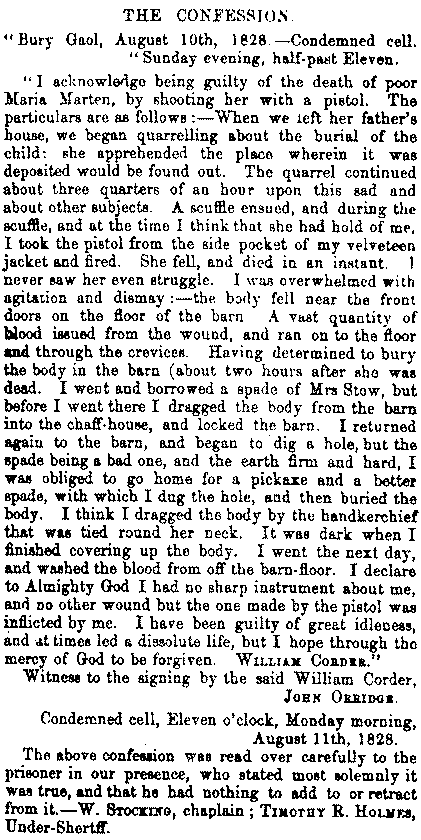
Moyse's Hall Museum in Suffolk



Corder's bust
Moyse's Hall holds a copy of
William Corder's death bust, now one of Bury's star attractions. It
was kept for many years at the old West Suffolk Hospital. Offered to
the museum, it was rejected by the then curator as "too macabre" and
thrown away. A passer-by rescued it from the rubbish tip. He offered
it to a later, less squeamish, curator, who gladly accepted.
People often comment on the
bust's apparently negroid features. These are a side effect of the
hanging. Corder's head was engorged with blood, as the prominent
veins suggest and the autopsy report confirms. As far as we know,
Corder was of Suffolk stock.
The bust was made by Mr Child
of Bungay, a well-known Suffolk printer who also had a talent for
making death masks and busts.
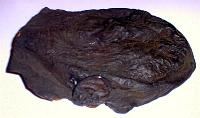
Corder's scalp
Corder's corpse was dissected at the West
Suffolk Hospital. The surgeon, George Creed, kept and preserved the
scalp, with the right ear attached. He also retained and tanned a
part of the skin.
Stubble can still be seen on the scalp, giving
rise to tales that Corder's hair grew mysteriously after his death.
The truth is more prosaic. After shaving, a small length of the hair
shaft remained below the skin. The scalp shrank during the tanning
process, but the hair was not affected and protruded above the
surface
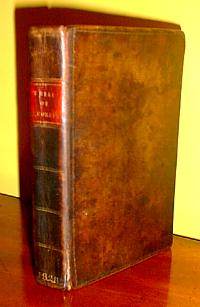
The book bound in
Corder's skin
Visitors to the museum often
ask to see the bible bound in Corder's skin. We don't have one - but
his skin was used to bind a book. It is a copy of Curtis's account
of the murder, and once belonged to George Creed, the surgeon who
conducted the dissection. Creed inscribed it thus:
"The Binding of this book is
the skin of the Murderer William Corder taken from his body and
tanned by myself in the year 1828. George Creed Surgeon to the
Suffolk Hospital"

Death mask
The death mask in Moyse's
Hall is a copy, made in 1945, of an original in Norwich Castle
Museum. The mould for the original was made by a Mr Mazzotti of
Cambridge at the same time that Child took moulds of Corder's head
for the bust.
|





















